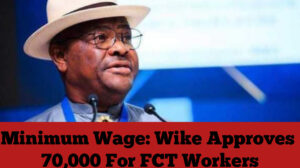China’s central bank cut a key interest rate and pumped billions into financial markets Thursday, as fresh data showed the world’s second-largest economy was flagging.
The moves are the most significant by leaders to try to invigorate growth after indicators in recent months showed a hoped-for strong recovery following years of Covid lockdown-induced slowing was quickly running out of steam.
China’s efforts contrast with those in the United States and other Western countries, which have been forced into a series of interest rate hikes while reducing the money supply to tame inflation.
Officials lowered the medium-term lending facility (MLF) rate — the interest for one-year loans to financial institutions — 10 basis points to 2.65 per cent, the People’s Bank of China said in a statement.
The PBOC also said it was offering 237 billion yuan ($33 billion) of funds to banks through the medium-term lending facility, “to maintain reasonable and sufficient liquidity in the banking system”.
The announcement came two days after unveiling a surprise cut in a short-term interest rate this week, which analysts said reflected growing concern about the state of the economy among Chinese policymakers.
The MLF rate guides the benchmark lending rate for households, businesses and mortgages, which is set to be announced next week.
A lower MLF rate reduces commercial banks’ financing costs, in turn encouraging them to lend more and potentially boosting domestic consumption.
A number of lacklustre economic indicators in recent weeks have signalled the country’s post-Covid recovery is running out of steam.
Inflation rose only 0.2 per cent on-year in May, while factory activity contracted for the second consecutive month.
In another sign of weakness Thursday, figures showed youth unemployment rose to a record 20.8 per cent in May.
Meanwhile, industrial production growth slowed to 3.5 percent as factories gradually returned to full capacity, while retail sales, the main indicator of household consumption, rose 12.7 percent 18.4 percent April.
_Weakening momentum –
Retail sales are currently “the only functioning engine of Chinese growth”, Rob Carnell, Asia-Pacific head researcher at ING, said in a note.
Thursday’s data “equates to a seasonally adjusted decrease in month-on-month sales and shows that the re-opening momentum is falling”, Carnell said.
Exports also sank in May for the first time since February, breaking a two-month growth streak.
Beijing has kept interest rates low compared with other major economies, but the near-zero inflation highlights challenges faced by policymakers in trying to stimulate growth.
Top economist and government adviser Liu Yuanchun this month called for regulators to cut borrowing costs further to ease the financing burden of small and medium-sized private businesses.
Reports have in recent days said Beijing is lining up a series of measures targeting areas of the economy, particularly the real estate sector, which makes up a huge portion of gross domestic product.
China’s six largest state-owned commercial banks cut interest rates for savers on Thursday to boost spending, according to announcements on their websites, after being asked by the central bank.
The Chinese economy is also weighed down by a debt-laden property sector and a global economic slowdown.
“All the data points so far sent consistent signals that the economic momentum is weakening,” Zhiwei Zhang, president of Pinpoint Asset Management, said in a note on Thursday.
“We expect Beijing to ramp up transfers to local governments via an increase in the quota for special local government bonds, more in lending quota for policy banks, and some direct funding from the PBOC,” Ting Lu, Chief China Economist at Nomura, said in a note earlier this week.
AFP




